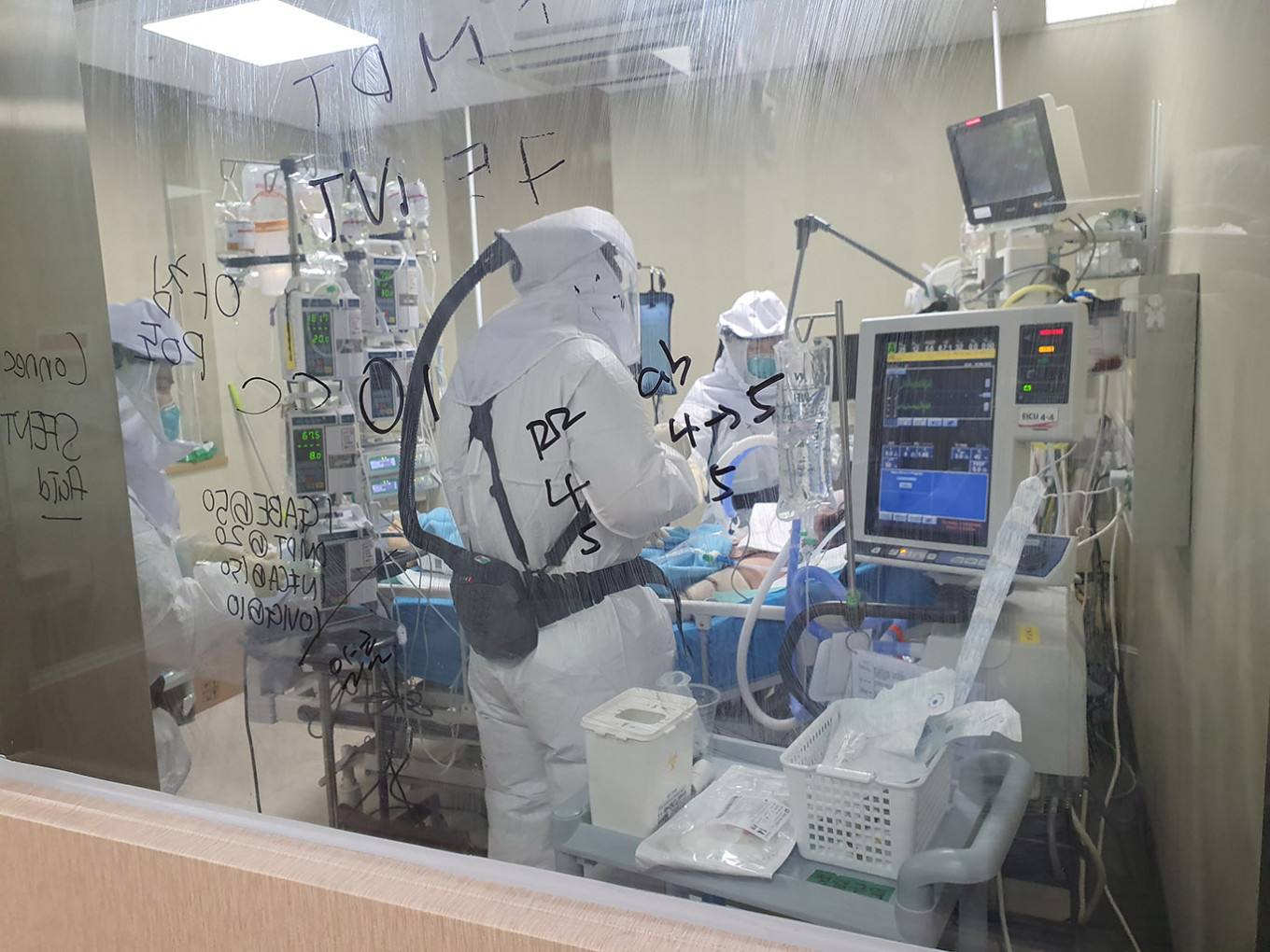Popular Reads
Top Results
Can't find what you're looking for?
View all search resultsPopular Reads
Top Results
Can't find what you're looking for?
View all search resultsSix months into anti-virus fight, Korea gears up for long fight
The most pressing task is to secure medical professionals and hospital beds to treat seriously ill patients, as well as other personnel to trace, test and treat COVID-19 patients, said Jeong Eun-kyeong, chief of Korea Centers for Disease Control and Prevention. in a briefing Monday.
Change text size
Gift Premium Articles
to Anyone
T
he fight against the COVID-19 for the past six months feels like running 10 kilometers of a marathon “at full speed” said Jeong Eun-kyeong, chief of Korea Centers for Disease Control and Prevention.
The most pressing task is to secure medical professionals and hospital beds to treat seriously ill patients, as well as other personnel to trace, test and treat COVID-19 patients, she said at a briefing Monday.
Monday marks six months since Korea reported the first COVID-19 case on Jan. 20.
“In the situation where COVID-19 is raging worldwide and a long fight is inevitable, our goal is to contain and control the size and pace of the virus outbreaks to a level where our medical, quarantine and social systems can manage them so that we can protect lives of those in high-risk groups -- such as the elderly -- and minimize the social and economic fallout,” she said
The most pressing challenges are to develop a vaccine and treatment for the COVID-19 patients, as well as to build up medical capacity to be prepared for a spike in the COVID-19 patients. Not to overwhelm the country’s health system and better cope with the prolonged pandemic, the country needs to secure more medical professionals in looking after seriously ill patients as well as hospital beds, she pointed out.
She also noted the need to change the country’s institutions, culture and social practices for citizens to be able to keep personal hygiene and maintain physical distance with others in their daily lives. She referred to support for more paid holidays or telecommuting as examples.
For about a month after Korea saw the first COVID-19 patient on Jan. 20, the country reported about 30 cases for the month -- about 1.03 persons a day -- mostly coming from China.
The virus situation began to get serious in mid-February as hundreds of new cases were reported a day in connection with the country’s largest-yet cluster -- a branch of Shincheonji Church of Jesus in Daegu. So far, a total of 5,213 people were linked to the cluster. Two other major clusters -- Cheongdo Daenam Hospital in North Gyeongsang Province and a call center in southwestern Seoul – also drove up the number of new cases. From Feb. 18 to May 5, it saw about 138.13 daily cases on average a day.
Coupled with the country’s efforts to rapidly and extensively trace, test and treat COVID-19 patients, the government put in place a social distancing campaign in late February through early May. On April 1, it required all international arrivals to self-quarantine for two weeks -- regardless of nationality -- as part of efforts to stem the continued influx of imported cases.
The efforts helped Korea largely bring the coronavirus under control until the number of cases began to spike again after a long holiday in early May. The virus transmission that began at bars and clubs in Seoul’s party district led to outbreaks at logistics centers, churches and door-to-door sales events. Since May 6, the country saw about 39.29 cases a day on average until Monday.
On Monday, Korea reported 26 new COVID-19 cases, with 22 imported from overseas and four locally transmitted, according to the KCDC. The total caseload rose to 13,771.
Of the 22 imported cases, 10 were detected during the quarantine screening process at the border and the rest while the individuals were under mandatory self-quarantine in Korea. Eighteen of them were from Asia -- including 9 from the Philippines, three from Pakistan, two from Iraq, two from Kazakhstan and one from Indonesia. Two were from the United States and two from Mexico.For the past two weeks, 59.5 percent of the COVID-19 cases were imported from overseas.
Of the country’s total 2,067 imported cases, 39 percent of them have come from Asia excluding China, followed by the Americas at 33.9 percent, Europe at 24.8 percent, Africa at 1.3 percent and China at 0.9 percent. Some 53.6 percent of the cases were detected after people entered the country, while the rest were found during the quarantine screening process at the border. The vast majority of the cases, or 68.2 percent, involved Korean nationals.
As part of efforts to stem the imported cases, starting Monday, the government added two more countries to the list of “high-risk” countries, requiring those coming from the countries to submit a certificate issued within 48 hours proving they tested negative for the coronavirus.
As for locally transmitted cases, two were registered in Seoul, one each in Gwangju and South Jeolla Province.
So far, 12,572 people, or 91.3 percent, have been released from quarantine after making full recoveries, up 16 from a day earlier. Some 903 people are receiving medical treatment under quarantine.
One more person died, raising the death toll to 296. The overall fatality rate stands at 2.15 percent -- 2.56 percent for men and 1.82 percent for women. The rate is much higher for those in their 80s or over -- 25.26 percent -- and those in their 70s -- 9.55 percent.
The country has carried out 1,470,193 tests since Jan. 3, with 21,302 people awaiting results as of Wednesday.










